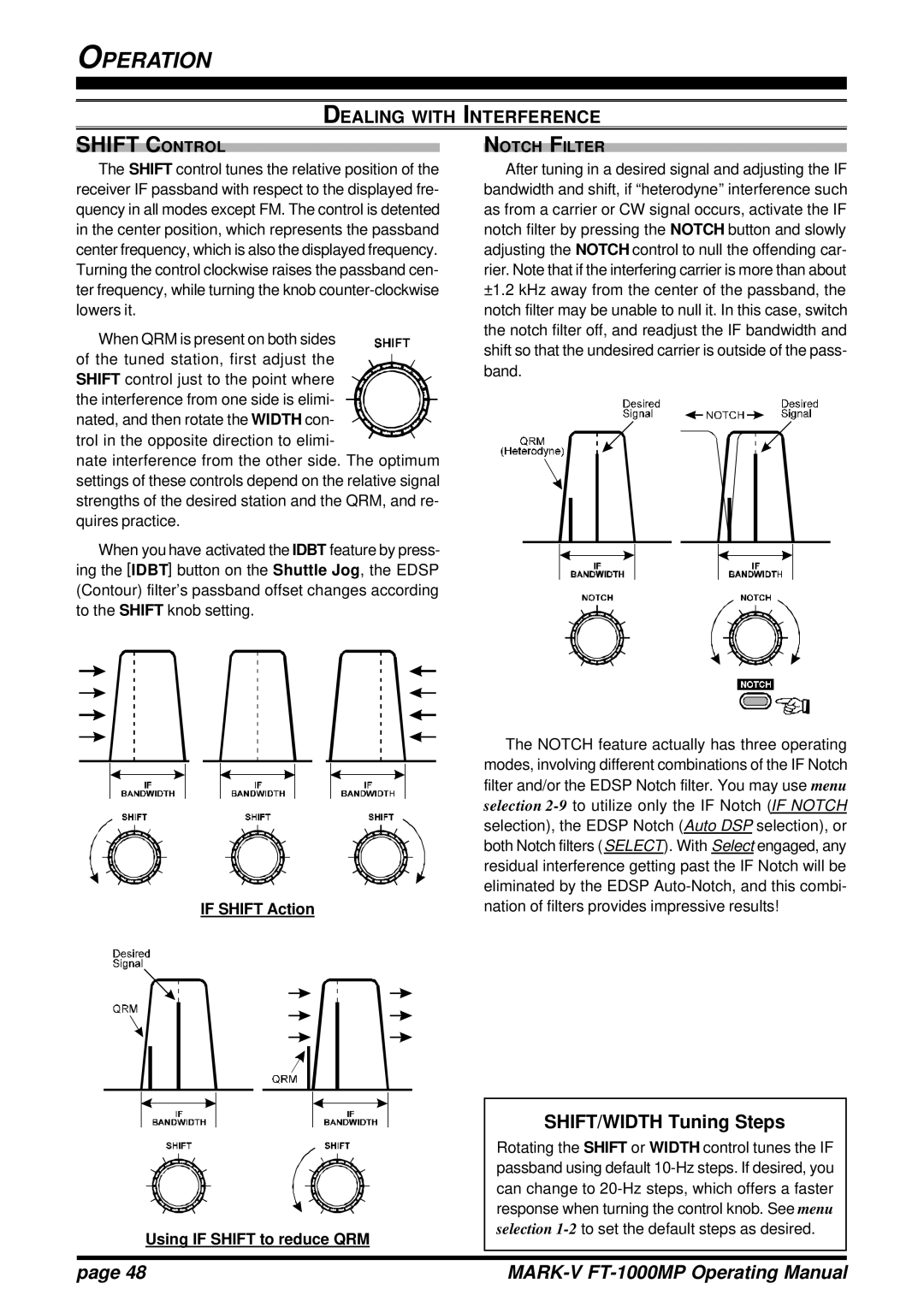
OPERATION
DEALING WITH INTERFERENCE
SHIFT CONTROL
The SHIFT control tunes the relative position of the receiver IF passband with respect to the displayed fre- quency in all modes except FM. The control is detented in the center position, which represents the passband center frequency, which is also the displayed frequency. Turning the control clockwise raises the passband cen- ter frequency, while turning the knob
When QRM is present on both sides ![]()
![]()
![]() of the tuned station, first adjust the
of the tuned station, first adjust the ![]()
![]()
![]() SHIFT control just to the point where
SHIFT control just to the point where ![]()
![]()
![]()
![]()
![]()
![]()
![]()
![]()
![]()
![]() the interference from one side is elimi-
the interference from one side is elimi- ![]()
![]()
![]()
![]()
![]()
![]() nated, and then rotate the WIDTH con-
nated, and then rotate the WIDTH con- ![]()
![]()
![]()
![]()
![]()
![]()
![]()
![]()
![]() trol in the opposite direction to elimi-
trol in the opposite direction to elimi- ![]()
![]() nate interference from the other side. The optimum settings of these controls depend on the relative signal strengths of the desired station and the QRM, and re- quires practice.
nate interference from the other side. The optimum settings of these controls depend on the relative signal strengths of the desired station and the QRM, and re- quires practice.
When you have activated the IDBT feature by press- ing the [IDBT] button on the Shuttle Jog, the EDSP (Contour) filter’s passband offset changes according to the SHIFT knob setting.
IF SHIFT Action
NOTCH FILTER
After tuning in a desired signal and adjusting the IF bandwidth and shift, if “heterodyne” interference such as from a carrier or CW signal occurs, activate the IF notch filter by pressing the NOTCH button and slowly adjusting the NOTCH control to null the offending car- rier. Note that if the interfering carrier is more than about ±1.2 kHz away from the center of the passband, the notch filter may be unable to null it. In this case, switch the notch filter off, and readjust the IF bandwidth and shift so that the undesired carrier is outside of the pass- band.
The NOTCH feature actually has three operating modes, involving different combinations of the IF Notch filter and/or the EDSP Notch filter. You may use menu selection
Using IF SHIFT to reduce QRM
SHIFT/WIDTH Tuning Steps
Rotating the SHIFT or WIDTH control tunes the IF passband using default
page 48 |
|
